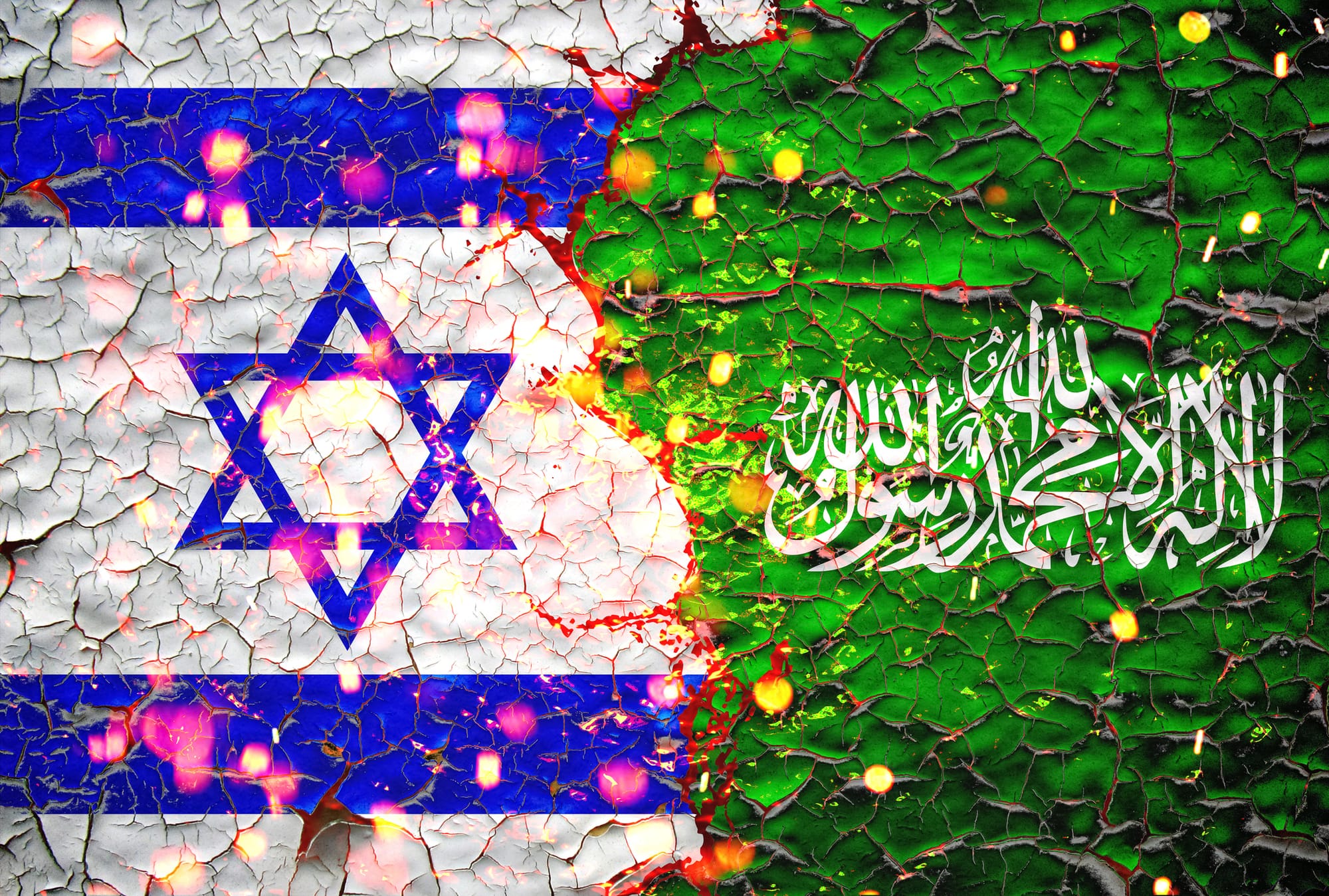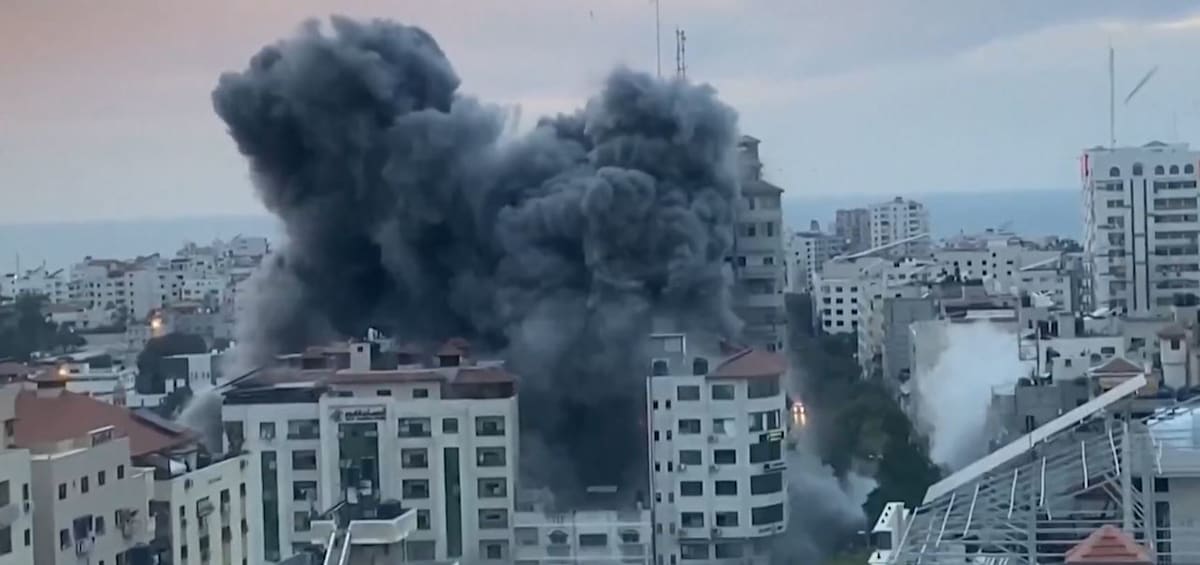
The events on the Gaza-Israel border, which started on 7 October, are nothing short of an earthquake. The implications are difficult to foresee right now, but are likely to be enormous.
Hundreds of Palestinian terrorists from Hamas, the Palestinian Islamic Jihad (PIJ) and other groups were able to breach the fence around Gaza.
Despite various defence systems, sensor arrays and military forces deployed by Israel in the area, the Palestinians, armed to their teeth, invaded Israel, conquered military bases, and drove their vehicles and motorcycles into dozens of towns and villages neighbouring Gaza.
There, they started an orgy of killing and terror, shooting at civilians, policemen and soldiers, setting fire to houses, carrying their weapons along the residential streets of Israeli towns.
Over the next few hours, more than 700 Israelis were murdered, at least 2000 injured, including many with life-threatening wounds, as well as hundreds of Palestinians – and these numbers are not finalised.

Thousands of rockets were fired from Gaza towards Israel, including at Jerusalem and Tel Aviv. Dozens of men, women, children, elderly people and soldiers were kidnapped into Gaza.
Social media was inundated with videos of looting, vandalism and murder, alongside a wave of revolting fake videos and images released from Palestinian sources.
Responding to these atrocities, the initial task of the Israeli Defence Forces (IDF) was to remove the infiltrators from Israeli soil. Israeli Prime Minister Binyamin Netanyahu mobilised the country’s resources, called up IDF reservists, and declared a war on Hamas.
Prime Minister Benjamin Netanyahu, this evening:
“This morning, on Shabbat and a holiday, Hamas invaded Israeli territory and murdered innocent citizens including children and the elderly. Hamas has started a brutal and evil war.” pic.twitter.com/ckPXuXNHk0— Prime Minister of Israel (@IsraeliPM) October 7, 2023
The huge protest movement that has torn Israeli society apart from within throughout this year, strenuously rejecting the government’s controversial judicial overhaul plan, called on all serving reserve soldiers to postpone any protests and join their units fighting around Gaza.
This brutal attack is unprecedented in the bloody history of the Israeli-Palestinian conflict.
‘Israel’s 9/11’
From Israel’s point of view, this weekend’s events constitute a trauma of enormous magnitude. The sheer number of victims will be overwhelming for the Israeli public. Worse, the attack reflects a dramatic security and political failure on multiple levels.
The first finger of blame will be pointed at Israel’s famed intelligence apparatus. Despite drones circulating Gazan skies 24/7, ongoing flow of intelligence from human sources and many other means, the security forces apparently didn’t know in advance about the planned operation.
Such an attack, coordinated and large-scale, requires months of preparations, training and funding.
Hamas received aid and guidance from Iran, and from Teheran’s proxies, the terrorist organisations of Hezbollah and the PIJ, and has openly conducted military exercises based on the scenario of this attack. In fact, Hezbollah fighters showcased this very same attack plan – breaching the fence and infiltrating Israeli cities to kill and kidnap civilians – just a few months ago.
In the lead-up to the attack, in recent weeks, Hamas operatives have tested the IDF’s responses to breaches of the fence, carefully mapping possible points of entry and preferred methods to achieve their goal.
All this was done in the open, but no concrete warnings were issued. Israel was surprised, and fell for the enemy’s deception show in a manner that overshadows even the colossal intelligence failure of the Yom Kippur war, exactly 50 years ago, when on 6 October, 1973, Egypt and Syria were able to launch a shock campaign against the Jewish state.
The second Israeli failure is tactical. The thick defence arrays around the Gaza strip, deploying sophisticated systems underground and above ground, and soldiers in bases around Gaza, all crumbled. The military’s tactical plan to defend this area collapsed completely.
Two of the pillars of Israel’s security doctrine – early warning (Hatra’ah) and deterrence (Harta’ah) – were neutralised. The third pillar, decisive and swift victory in enemy territory (Hakhra’ah), is also in doubt given the many hostages in Gaza, and fears that other fronts, Lebanon and the West Bank most notably, could join the fight.
As the conflict between Israel and Palestine reaches its second day, these are the main developments. https://t.co/s1PlfE5bzP— Al Jazeera English (@AJEnglish) October 8, 2023
The worst catastrophe is strategic. Israeli governments, whether led by left or right-wing parties, have chosen containment again and again as their answer to security threats from Gaza, but have offered no long-term solution.
Since 2007, when Hamas took over the strip in a bloody coup d’état, leaders in Jerusalem opted not to remove Hamas from power, nor to assist the Palestinian Authority (PA), run by Fatah (the faction that recognised Israel in the 1993 Oslo Accords), to regain control over the strip. Today, in hindsight, the corrupt and failing PA looks like the least bad of two very terrible options.
Since the unilateral traumatic removal of 8500 Israeli settlers from the strip in 2005 under then-PM Ariel Sharon’s disengagement plan, Israel has regularly conducted military operations against Hamas (and PIJ) in Gaza, with significant periods of fighting every year or two, and a major conflict in 2014.
In addition, Jerusalem permitted Qatar to hand out millions to poor families in the strip and pay for gas to the power plant supplying electricity to Gaza, while Israel has increasingly allowed Gazans to work in Israel. Hamas used taxes collected from these workers, and their share of the Qatari money, to rebuild and increase its military capabilities, including its arsenal of missiles and drones.
This “economic benefits in exchange for quiet” formula that was being pursued has now blown up in Israel’s face.
In 2023, the deep internal divide within Israel, exposed in full after the new right-wing government in January of this year unveiled its plan to weaken the Supreme Court, was perceived by Israel’s enemies as a divine sign for the upcoming demise of the “Zionist entity” – as prophesised repeatedly by Iran’s Supreme Leader, Ayatollah Ali Khamenei. That belief was likely a major incentive for Hamas to launch this attack.
A ‘victory’ that spells disaster for the Palestinians
The Palestinians see this attack as a success of strategic proportions after years of humiliation. The key buzzwords in the Palestinian social media sphere are “raising your head” with pride.
Hamas equates itself with Hezbollah, which claims to have driven Israel out of Lebanon more than two decades ago, and preens over its supposed “victory” over Israel while all Arab armies lost all their wars fighting the Jewish state.
By taking hostages, Hamas hopes to free the many Palestinian prisoners in Israeli captivity – something it can also trumpet as a major victory to hopefully gain popular Palestinian and Arab support.
What a gloomy “victory” it is, a real double-edged, bloody sword.
As jihadist entities, Hamas and other Gaza organisations do not seek to minimise Palestinian casualties, as they believe dying in glorified martyrdom on the way to heaven is a good thing. This extremist ideology means that, when Israel moves into full-scale attack mode with much less restraint than in the past, following Netanyahu’s vow to avenge this mega-terror “black day”, the number of dead and wounded on the Palestinian side will sadly skyrocket.
In recent years, life in Gaza has become almost unbearable. An estimated two million people are crammed into a narrow strip 40km long and less than 12km wide.
Years of being trapped between Israel and Egypt, neglect of infrastructure (lack of proper sewage, water and electricity supply), and a religiously fanatic oppressive regime resulted in widespread poverty, unemployment and despair.
In such a grim existence, joining one of the terrorist organisations is sometimes the only way to survive. Hamas operates health and social services and summer camps for youth, teaching kindergarten children to fight and become martyrs by killing ‘Zionists’.
‘People are fearful of what’s to come’: Gaza civilians flee waves of Israeli strikes | Gaza | The Guardian https://t.co/slq7B32y0J— Lysistrata's Stone Phallus (@LUBOttom) October 8, 2023
This new war with Israel will provide no solution to the deeply-rooted problems of Gaza. Instead, it’s destined to exacerbate the terrible situation of Gaza’s residents. A battle over Gaza is expected to be long, with numerous victims and destruction on both sides.
What now?
It remains to be seen if this latest war will end up providing any answers to the core questions of the conflict. Will Israel topple Hamas, and at what cost? Who will take over Gaza if not Hamas? Will Hamas’ “victory” over the weekend be a death blow to the weak and unpopular PA? Can a two-state solution ever be achieved?
There is a lot at stake. Lurking in the shadows is Iran, with its imperialistic ambitions to export the extremist revolution, while it edges very close to acquiring nuclear weapon capabilities.
Mohammed Bin Salman, the all-powerful leader of Saudi Arabia, is eager to see how Israel responds to this development, as he’s negotiating with the US a mega-deal to normalise relations with Israel that can change the geostrategic power balance in the region.
The whole Middle East will be watching closely how this clash of civilisations between an Islamist jihadist entity and a Western democracy ends.





